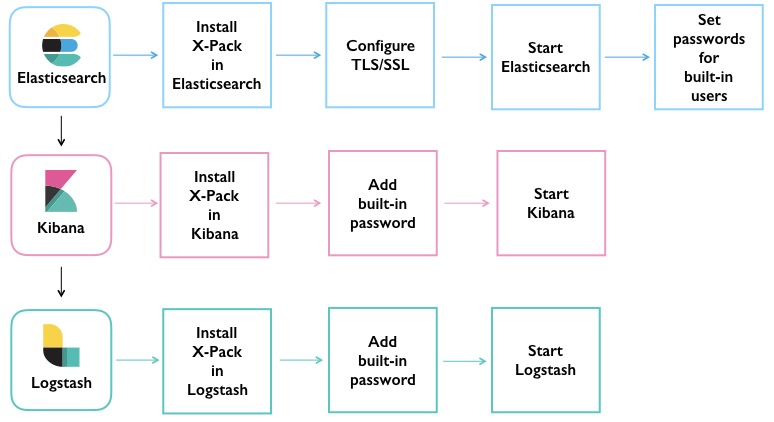WARNING: Version 6.1 of the Elastic Stack has passed its EOL date.
This documentation is no longer being maintained and may be removed. If you are running this version, we strongly advise you to upgrade. For the latest information, see the current release documentation.
Installing X-Pack
editInstalling X-Pack
editYou must install Elasticsearch and Kibana before you install X-Pack. If you plan to use the X-Pack features in Logstash, you must also install Logstash before you install X-Pack. For more information, see:
You must install the version of X-Pack that matches the version of each product. For more information about product compatibility, see the Elastic Support Matrix.
To install X-Pack on the Elastic stack:
The following diagram provides an overview of the steps that are required to set up X-Pack on each product:

The X-Pack installation scripts require direct internet access to download and install X-Pack. If your servers don’t have internet access, you can manually download the X-Pack zip file and transfer it to a temporary directory on the offline machines. The plugins for Elasticsearch, Kibana and Logstash are all included in a single zip file. For more information about installing X-Pack on offline machines, see the product-specific X-Pack installation instructions.
Enabling and Disabling X-Pack Features
editBy default, all X-Pack features are enabled. You can enable or disable specific
X-Pack features in the elasticsearch.yml, kibana.yml, and logstash.yml
configuration files.
| Setting | Description |
|---|---|
|
Set to |
|
Set to |
|
Set to |
|
Set to |
|
Set to |
|
Set to |
For more information about which settings exist in each configuration file, see X-Pack Settings.